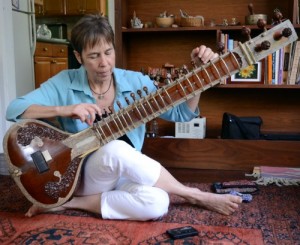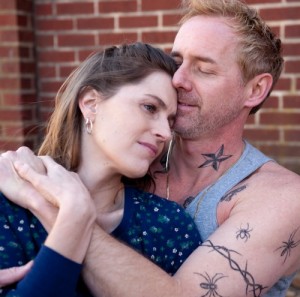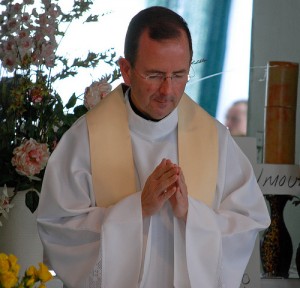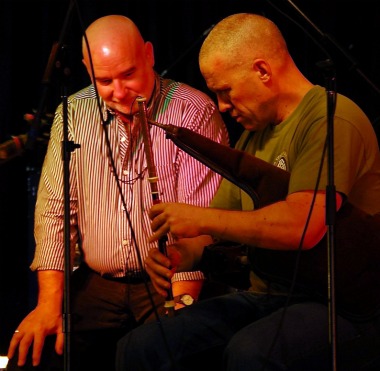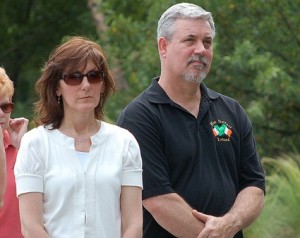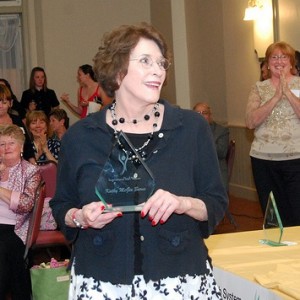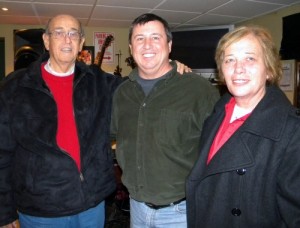If you listen to Allyn Miner play fiddle in the Tuesday night Irish music session at the Shanachie Pub in Ambler, you’re hearing what one talented player can do with just four strings.
You ought to hear what she can do with 20.
In addition to her skill as a fiddler, Miner is a well-known player and instructor on the much-larger-than-a-fiddle traditional Indian instrument called the sitar.
(If you don’t know what a sitar sounds like, pull out your old Beatles Rubber Soul album. George Harrison plays the instrument on Norwegian Wood. You’ll recognize the distinctive metallic buzz, a kind of silvery sizzle, and the whining, hypnotic drone.)
A senior lecturer in Penn’s Department of South Asia Studies—she’s been there for 20 years—Miner began her long love affair with the sitar when she was still a junior in the Indian Studies program at the University of Wisconsin. Born and raised in Chestnut Hill, she grew up knowing how to play the violin. Sitar, when it came into her life, was not so much a departure, she says, but a way of building on musical skills she already possessed.
The path to sitar enlightenment evolved largely out of Miner’s enrollment in the University of Wisconsin, which had an Indian Studies program. The desire to attend school far away from the safe confines of Philadelphia came first, but the university’s Indian Studies was definitely an allure.
“My mother said I had that in mind before I went there (the University of Wisconsin),” says Miner. “Really, I was mostly interested in going to a different place, to another environment away from Philadelphia for a change. The university’s Indian Studies program was an attraction.”
Miner took Hindi to fulfill her language requirement, took courses in Indian culture, attended many of the department’s social functions. She found herself pulled more and more into this country 8,400 miles away.
“I guess I was first drawn out of curiosity,” she says. “I wasn’t sure what to make of it. I wanted to know more about it.”
When Miner got the opportunity, she signed up for the department’s junior year abroad in India.
She knew right away that she had made the right choice.
“It was a huge adventure, of course. I lived in Banares (now called Varanasi, in the country’s southeast.) It was a smallish town,” Miner recalls. “There were no telephones or refrigerators or even cooking gas at that time.”
For Miner, junior year in Indian was a total immersion learning experience, starting with the language. “Hindi was the whole doorway into everything. People didn’t feel comfortable speaking English, not the people I hung around with.”
In time, she met a teacher of sitar, Thakur Raj Bhan Singh. Before she left for India, she had taken some lessons from a teacher in Wisconsin. This new teacher was a very different. “My experience took a new musical direction when I found a good teacher. It sucked me in,” Miner says. “He took me under his wing. He had five kids but I became like a family member. He introduced me to all these other people, including his own teacher, this elderly man who gave me his instrument. None of his children played. It’s a very, very rare instrument. It’s one of a kind.”
When she first started to take instruction, Miner admits she was not “the quickest of students.” However, she persevered.
To be fair, the sitar probably is not the easiest of instruments to learn. (Many say it takes at least a decade to master.) First, there are the aforementioned 20 strings, stretching to the top of the instrument’s three-foot red cedar neck. The neck itself is about three and a half inches wide, with 19 widely spaced raised brass frets. The deep rounded base of the instrument is formed from a pumpkin gourd, and it is decorated with intricate carvings, often in a lotus design.
Traditionally, the sitar player sits cross-legged on the floor, with the neck draped across the right thigh. Miner is petite, and when she plays, the top of the keyboard is level with the top of her head.
Although sitar is a very different instrument, Miner found that her years of playing violin proved useful.
“It (the sitar) has a lot of strings, but it’s a single melody line, and all the rest of the strings are droning. Violin was great ear training. If you can hear intervals in a tune, you can just imitate.”
Unlike Western music, which is notated—violin players follow sheet music—sitar has no notation. There is a fixed scale, but sitar tunes—raags (pronounced roggs)—are taught by ear. Each of these raags has a basic core structure, Miner says, but then you improvise around it.
Complex rhythms also prove challenging.
“They have a long repeating number of beats—say, 16—and you improvise within that, but you have to keep track of where you are within the 16. The big thing is keeping track of where you are. That’s a skill that also takes a while.”
Sitar also appealed to Miner’s sense of creativity. There are rules and structure to a raag, but there is freedom as well, she says. “Those rules are free enough that you can do anything. You can do what your teachers taught you or you can take off from there. You have to create your own style, so you’re not reproducing anyone else’s music. You’re creating your own music.”
As Miner’s Wisconsin Year in India came to a close, there was little doubt that the country held her in thrall. She stayed another year in India before returning to the university to finish her degree, then headed back to India for a long stay, with the assistance of Fulbright and Rockefeller scholarships. In all, she lived in India nearly 11 years, receiving her Ph.D. from the Department of Musicology, Banaras Hindu University, in 1982.
After Miner’s return to the United States, she became a lecturer in ethnomusicology at Temple University, and in 1987 became a lecturer in South Asian studies at Penn. (She also received another Ph.D. from the university’s Department of Asian and Middle Eastern Studies in 1994.)
Like most good musicians, though, Miner always had room for other forms. Music is music. A few years ago, quite another culture and style of music intruded on Miner’s consciousness. One of her friends had traveled to Ireland and she had taken some Irish fiddle lessons. The friend asked if Miner wanted to take some lessons, too, and she said yes, never knowing where it would lead. So she went and learned a tune from another friend up in Boston. That tune was a jig called “Dan the Cobbler.”
Then, she looked for places where Irish music is played. She found the Sligo Pub in Media. “I just wanted to see an Irish music session. I’d never been to one before, and the one at Sligo was good-sized, maybe eight or nine musicians.”
Miner hadn’t brought her fiddle along, but another fiddler lent her his and invited her to play her one and only tune.
“And they all joined in and I was hooked,” Miner recalls. “Completely, totally, thoroughly. They all just joined in and I thought: I’m in heaven.”
After that, she took lessons from local fiddler (now in Boston) Brendan Callahan and later on from Padraig Keane and local teen phenom Caitlin Finley. (She remembers thinking: “Omigod, my idol is a high school senior.”)
Since then, Miner has become a regular at local sessions—the Shanachie in Ambler and the Plough and Stars in Old City, in particular.
That she should pursue two cultures and two different musical forms seems not at all unusual to Miner. Both are forms of folk music. Indian music does differ from Irish music in one key way, she says: Sitar music is mostly a solo performance. “You play with a drummer, but not a group ever,” she says. There’s a lot of pressure when you’re performing. You have to create the performance right on the spot. That’s a big responsibility.”
In contrast, Miner says, Irish musicians play in a group, and they play for each other. It’s a more social activity.
Miner remains devoted to Indian music in all its haunting loveliness. She continues to be renowned for her teaching and playing. But there’s always room in life for more passion. And Miner found it, she says, when she discovered the music of Ireland.
[kindlethis]

